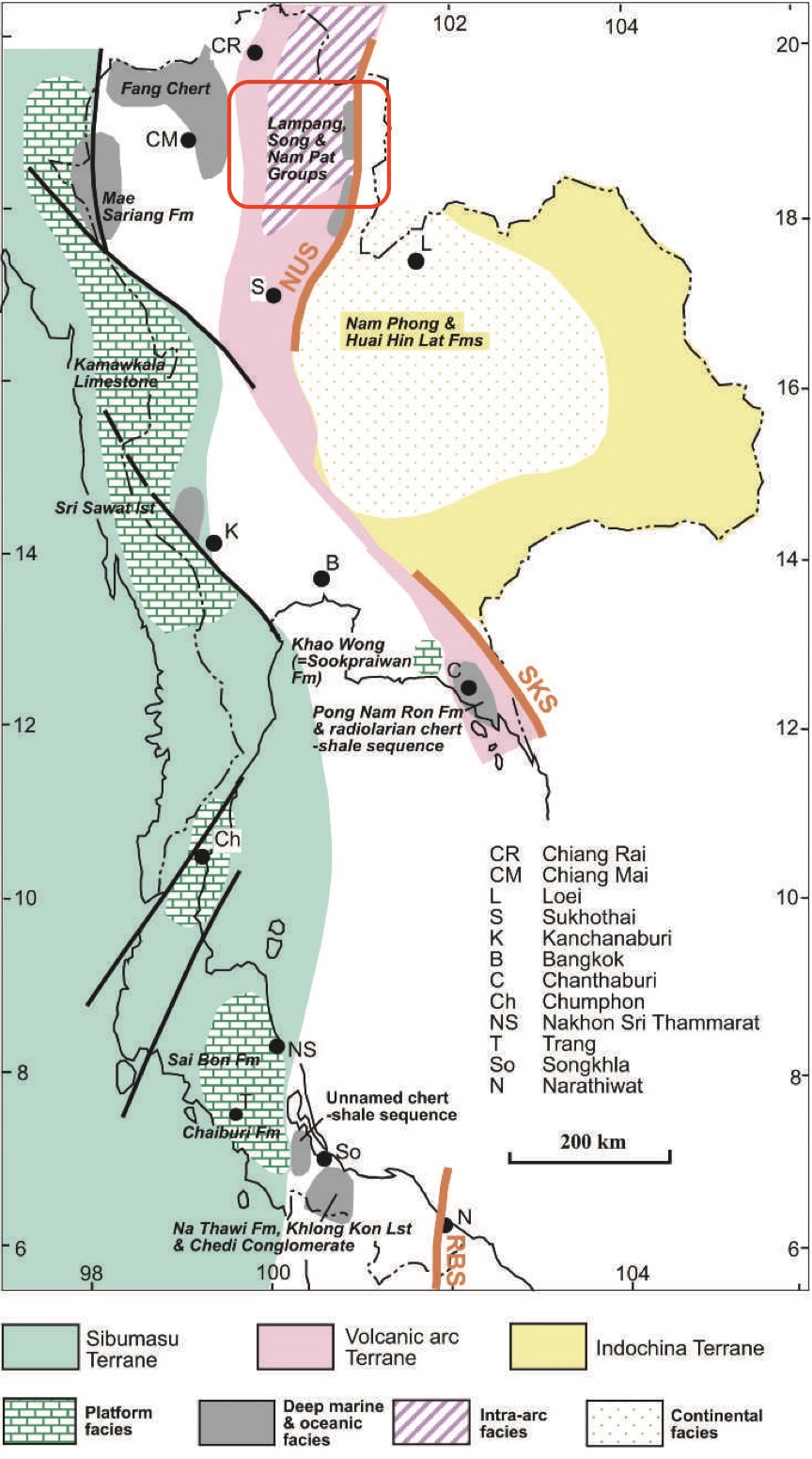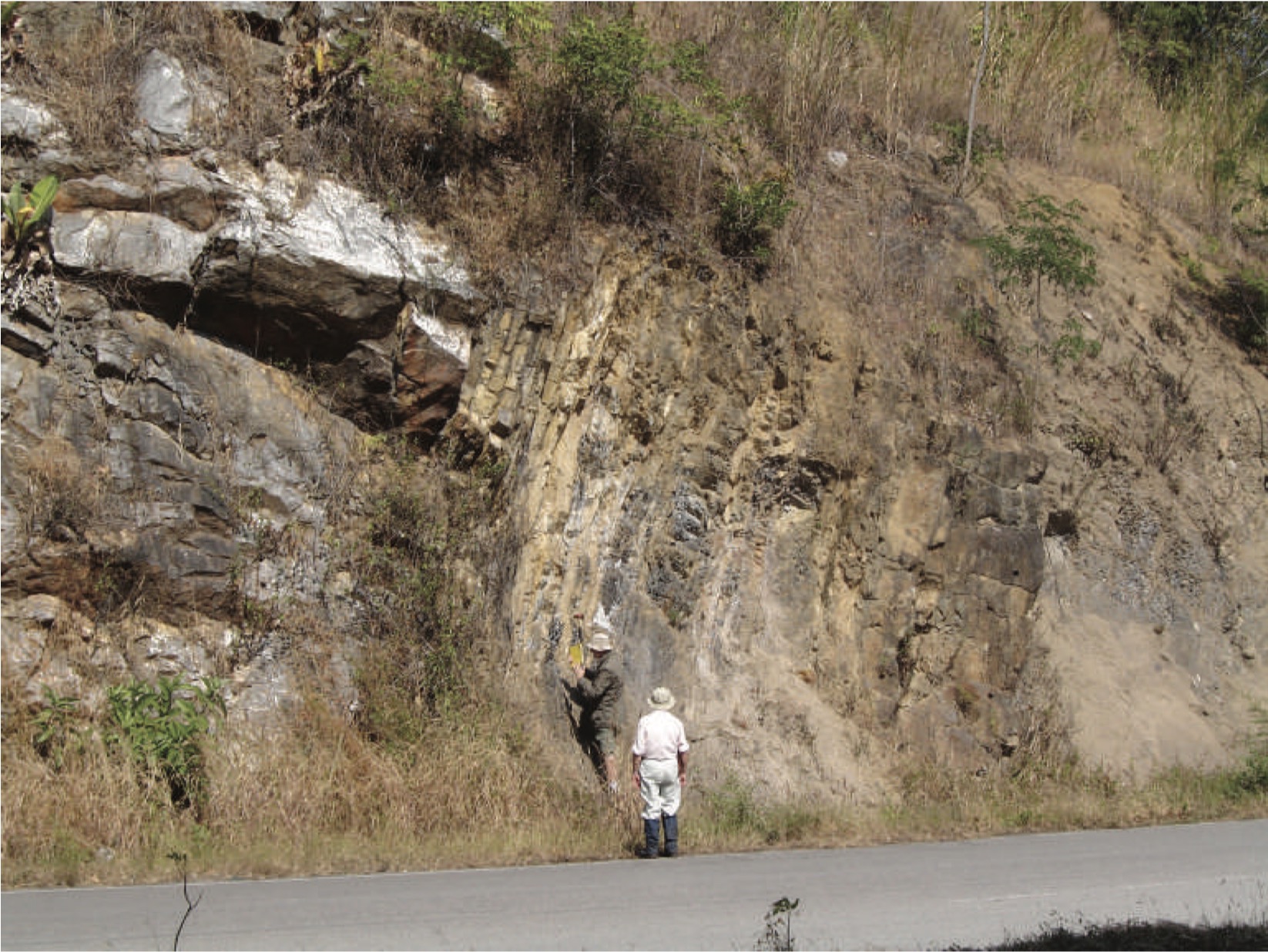Hong Hoi Fm
Type Locality and Naming
Synonym: หมวดหินฮ่องหอย
[Figure 1 : Generalized distribution of different Triassic sedimentary environments and some of the more important lithostratigraphic units, and their relations to the terranes. (The geology of Thailand, 2011) page 146]
Lithology and Thickness
[Figure 2: Northwards view of Hong Hoi Fm overturned to the ESE, comprising conglomerate and pebbly mudstone (extreme right) passing down stratigraphically into arkosic sandstone, then shale and bedded shelly limestone and finally massive limestone of the Pha Kan Fm (on extreme left). Highway 1, Lampang Province, about 18831 0 N, 99849 0 E (photograph courtesy of M. F. Ridd). (The geology of Thailand, 2011) page 139]
Relationships and Distribution
Lower contact
Upper contact
Regional extent
[Figure 3 : Generalized distribution of marine Triassic sedimentary rocks in Thailand (in purple) (modified after Mantajit 1999). (The geology of Thailand, 2011) page 138]
GeoJSON
Age
Depositional setting
Additional Information

